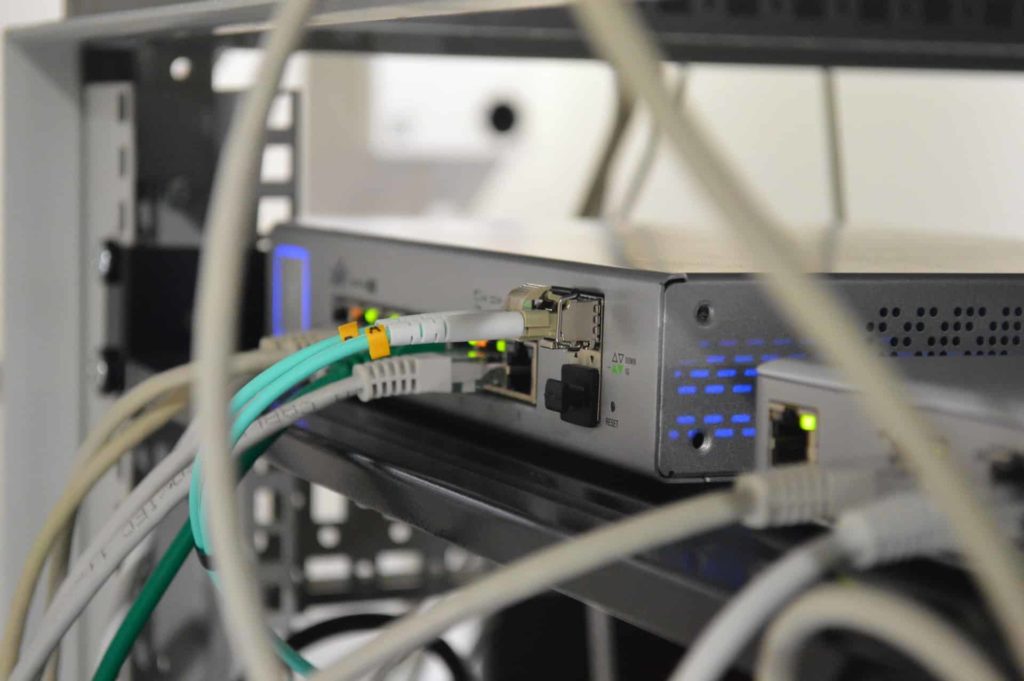The signal loss along a fiber-optic link, known as insertion loss, is expressed in dB and is meant to be positive. However, it can sometimes be negative, which is not ideal.
Another measurement, return loss, gauges the amount of light that is reflected back to the source. Like insertion loss, it is expressed in dB and is always positive. A high return loss is considered a good outcome and often results in low insertion loss.
Reflectance, which also measures reflection and is expressed in dB, is expressed as a negative value. High reflectance is not ideal.
It’s understandable if all these positive and negative dB readings have you feeling a bit confused. The interplay of these positive, negative, high and low dB results often causes misunderstandings among professionals in the industry.
What is Insertion Loss?
A frequently monitored performance characteristic in fiber-optic links is insertion loss. This occurs in all types of transmission, whether electrical or data. Longer cables generally result in more loss, as well as any joints along the route, such as connectors or splices.
Insertion loss is expressed in decibels (dB) and is considered to be a good thing if it is a positive value, as it indicates how much signal was lost when input power was compared to output power. In simpler terms, the signal coming out is always weaker than what went in. A lower number is better for insertion loss performance, meaning a value of 0.2 dB is preferable to 2.0 dB.
In some cases, insertion loss may appear as a negative value, which could mistakenly suggest a signal gain. However, this is actually an issue, often caused by improper reference settings. For example, if the reference cable is unclean during zero reference setup and then cleaned before testing, the insertion loss may appear as a gain and have a negative value.
Data centers can choose from multimode or single-mode cabling options. Negative loss, or gains, can occur due to disparities between connected fibers, leading to greater backscattered light after a connection compared to before. Measuring in one direction only can result in a negative value that is less than the actual loss, shown by an optical time-domain reflectometer (OTDR). Bidirectional testing, which measures in both directions and averages the results, is necessary to get an accurate reading.
What is Return Loss?
Another performance metric in fiber-optic connections is return loss, which measures the amount of light from the source that is reflected back toward the source. Expressed in positive dBs, the higher the value, the better the return loss performance – a value of 60dB is superior to 30dB. If no light was reflected back, the return loss would be infinite.
What is Reflectance?
Reflectance, which measures the amount of back reflection created by a reflective event, such as a connector, compared to the amount of light injected, is the inverse of return loss. It is expressed in negative dBs, and the lower the number, the better the reflectance – -60dB is better than -30dB. Reflectance is commonly used by OTDRs.
Calculating Return Loss and Reflectance
There is often confusion between return loss and reflectance as they both describe back reflection at a connector pair and are sometimes used interchangeably. However, the signs are different and are calculated differently:
Return Loss = 10 * log (incident power/reflected power) in +dB
Reflectance = 10 * log (reflected power/incident power) in -dB
Insertion Loss Final Thoughts
It is important to be mindful of the terminology used as some manufacturers may specify a negative value for return loss, meaning reflectance. It is recommended to avoid using “higher” or “lower” for dB values, as dB is a ratio measurement, and instead, use “better” or “worse.” To simplify, numbers closer to zero are better for insertion loss, while numbers further from zero are better for both return loss and reflectance.
Last Updated on March 29, 2023 by Josh Mahan




